Parenthood Hub
This is the fourth trimester stage of baby's life. From zero to Four months. Find sleeping tips, baby carrying hacks, ideal schedules and more.
from Four months to Two years. This is a busy stage. Find information on eating, sleep schedules, development and more.
Two and up to Four years old. This is the stage where they are learning how to interact with others, have more eating preferances, testing out their fine motor skills and so much more.
Newborn Hub

Are you expecting a baby? Congratulations! We're sure you're already experiencing all of the joys and hardships that come with bringing life into this world. But we'll bet there's one thing you haven't thought about yet: how to take care of your new bundle of joy. While the internet is full of tips and tricks for keeping babies alive, it can be difficult to know where to start. That's why we've decided to compile everything you need to know about newborn baby care in one place—so that by the time your child arrives, you'll be well-prepared for whatever comes next!
Feeding
Sleeping
Clothes
Carriers
Baby Hub

If you've recently had a baby, congratulations! You're about to embark on the most challenging and rewarding experience of your life. You'll learn that caring for a baby isn't as hard as it might seem. Once you get into a routine with your little one, everything will fall into place—and you'll finally have time to enjoy this new phase in your life.
Sleeping
Essentials
Toys
Clothes
Carriers
Toddler Hub
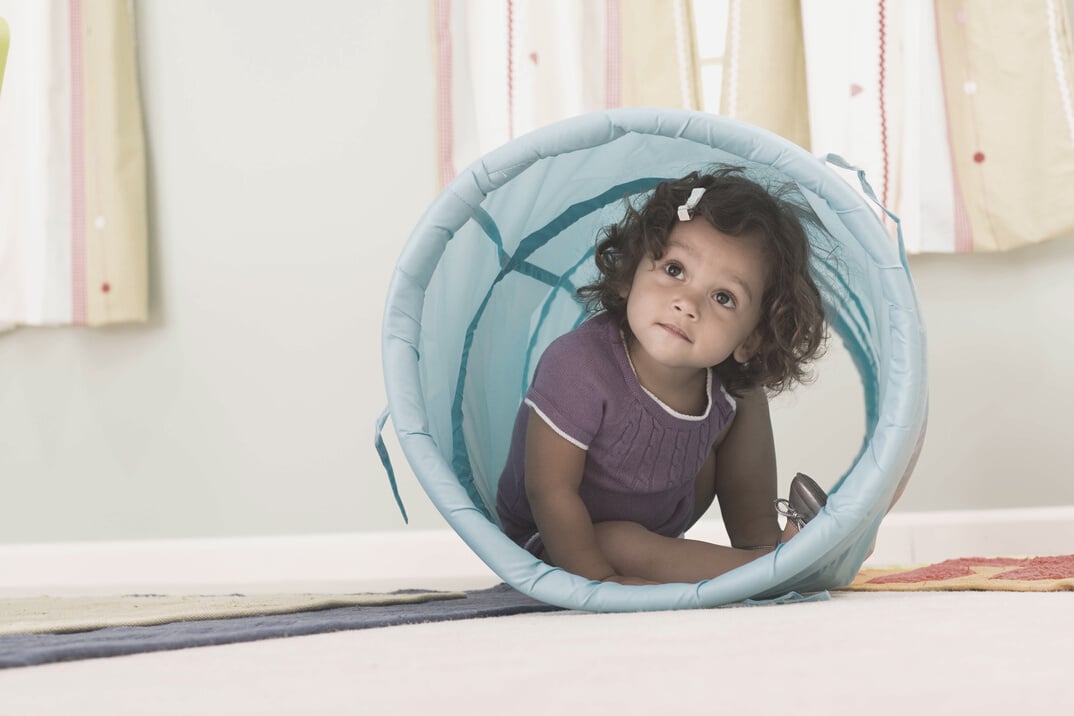
Toddler Hub is a blog dedicated to helping you make parenting a bit easier. We'll help you navigate the toddler years, from potty training to picky eating habits. You'll find tips for toddlers of all ages, as well as helpful advice for parents. Press Tab
Essentials
Clothes
Sleeping
Toys
Carriers

Creator
Hi, I'm Jade!
One of the best things in life is helping other succeed and I want to do just that. Because you know what? Parenting is the toughest job out there!
I don't care who you are it is hands down the hardest and most rewarding thing I have ever done in my life!
I have three beautiful children and a wonderful partner that make up the group of my most favorite people in the world.
If you ever find yourself pulling your hair out about feeding your kids, sleep schedules or just any thing kid related, I'm your lady!
I know you'll find at least on piece of helpful information here that will make your parenting journey just a tad more enjoyable.
Cheers
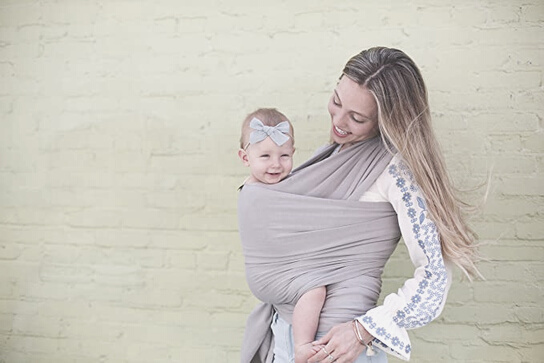



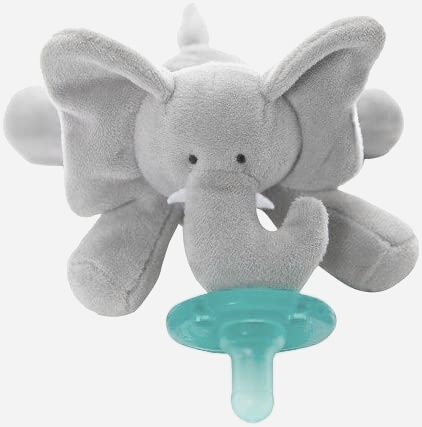




Best tips for getting your newborn to sleep through the night
*We share affiliate links throughout this article which we make a commission on when a purchase is made. We are so grateful for your love and support and hope to provide you with more helpful information.*
"It's hard to imagine, but there was once a time when you didn't know what sleepless nights were like."
You used to be able to sleep through the night with ease, then one day you brought home this little bundle of joy who refuses to go down for more than five hours at a time. I mean, sure it's cute and all that they're so dependent on us for everything—food, warmth, comfort—but it can also get really frustrating really fast! If you're tired of being woken up every few hours by your baby crying in their crib or even worse: you're tired of having them sleep by your side every night because they won't sleep anywhere else then this article is for you!

Swaddle them in a baby blanket or sleep sack.
"Swaddling can be a great way to calm a baby, and it may even help them sleep longer."
When swaddling your newborn, make sure that the blanket is snug around their body and that the top corner of the blanket is resting on your newborn’s shoulder — not their chin or neck. This will keep them safe while they sleep as they grow older and become more mobile.
Also remember when you're out in public places like restaurants or grocery stores with your little ones! They probably aren't going to want to wear diapers anymore so bring along some disposable ones just in case!
Create a bedtime routine that works for your family.
In order to make your baby fall asleep and stay asleep, it's important to develop a bedtime routine that works for you and your family. A good one will be calming and consistent, short and fun, soothing and relaxing—basically all of the above!
Here are some tips on how to create your ideal bedtime routine:
Give them a bath and massage before bed.
Giving your baby a bath is a great way to start the bedtime routine. It can be relaxing for both you and your baby, and it helps soothe them down for sleep. A warm bath also massages their muscles and can help with digestion. Plus, it's good for circulation!
You might want to consider giving them their first bath right before bedtime—this way they'll get used to getting into the tub before they go to sleep. You might want to try different things until you find one that works best: some babies prefer baths while others don't like being submerged as much as having their bodies gently washed off with a sponge or cloth (think of how we moms sometimes wash our own arms when we're preparing dinner). Try out different methods and see what works best for your child without making him uncomfortable or overstimulated by too much stimulation at once (like getting into bed immediately after bathing).
White noise is a sound that is continuous and constant, like the hum of a fan or vacuum cleaner. It can help you and your baby sleep better by reducing outside noises. Babies are especially sensitive to loud noises because their brains are still developing, so white noise can help them fall asleep faster and stay asleep longer—and even more soundly!
There are lots of white noise options for babies’ rooms, such as fans or sound machines with built-in lullabies (like this one). If you want to use other sounds instead of music or nature sounds from your phone, consider recording ambient sounds yourself or downloading them from an app like Baby Sleep Music Lullaby. This way if you have trouble falling asleep at night, there will be something familiar nearby helping both of you drift off into dreamland.
The room should be as dark as possible. This means no light from outside, no lights or alarms on in other rooms of the house, and no light coming through cracks around doors or windows. To make sure your baby has total darkness in his or her room, use curtains or blinds to block out any light coming through the windows. If you forget to close them before bedtime (or if they don't close all the way) consider turning off any bedroom lights that might be on so that there's nothing but pitch blackness surrounding your baby.
If you're worried about being able to sleep without some kind of light source nearby, try using a nightlight instead of turning on a lamp or overhead light—just make sure it gives off enough illumination so that you can see where you're going without shining directly into your child's eyes. Plus, many children find it comforting when they wake up at night because their room is so dark! If using a dim lamp isn't doing much for keeping things calm during those wee hours, consider investing in either an app-controlled sound machine (like this one), which plays white noise such as rain falling outside a window; soft music like classical piano; nature sounds like waves crashing on sand; thunderstorms rumbling across mountainsides; wind blowing through trees...you get it!

Place them down awake but drowsy.
When your baby is starting to get sleepy, place them in their crib or bassinet and tuck them into a sleep sack or swaddle. A safe place is key here; you do not want to leave your baby on the floor where they could roll over onto something that would hurt them. Make sure that they are placed on their back when you put them down so that they will be less likely to choke on their own spit while they sleep. Also, make sure that your baby isn’t sleeping in anything but a crib (or very close equivalent) unless you want to end up with one very unhappy little person who wants his/her parents constantly! This includes beds/sofa cushions/chairs etc… You don't want them getting used to falling asleep somewhere else which will make it harder for him/her when he/she goes into other places without Mommy nearby such as daycare centers later on down the road."
Let them fall asleep on their own.
'As your baby grows and matures, you will likely be able to put him or her down for a nap without any problems. However, if your newborn is still too young to sleep on his or her own (and especially for those with respiratory issues), you may need to do some trial and error before finding the right position for your child."


- When the time comes that you feel comfortable enough letting your little one fall asleep on their own, make sure they are not sick or overly hot or cold. If they have been sick recently and/or are congested, try laying them down in a semi-reclined position with a blanket covering their entire body so they can breathe easier.
- Remember that if your baby has breathing difficulties from congestion or other illnesses, it’s best not to let them fall asleep on their own until those issues are resolved because it could cause further complications later on when raising them as an older child who has learned how much independence he can get away with taking away from his parents!
Here is a list of our favorite sleeping items:
"Changing the bedding often is a good idea for two reasons."
First, babies spit up a lot (and you can't always avoid it), and second, babies are prone to bedtime accidents. Changing the bedding frequently helps keep everything as clean and dry as possible. Bedding should be soft enough to be comfortable but not so soft that it's hard on your baby's skin or her lungs when she rolls over while sleeping. Breathable fabric is also important so that she doesn't get too hot or cold while sleeping. Only use tight fitted sheets because loose sheets can become caught around your baby's neck and cause suffocation hazards.
If you change your newborn's diaper frequently throughout the night and keep her in a breathable crib mattress cover that has been washed with detergent free of fragrance ingredients such as dyes or perfumes then there should be no need for any other kind of mattress pad or blanket in addition to those provided by Naturepedic beds themselves (read more about this here).

"At this point, you're probably exhausted."
Your baby is probably exhausted too. And if you're anything like us, you've spent the last few hours trying to get your baby to sleep through the night.
If this is your first child and it seems like a hopeless task to get some rest, don't give up! There are plenty of tips on how to get your newborn baby to sleep through the night—we'll cover some of them below. But before we dive into those steps and strategies for success, let's take a moment to discuss why sleep matters for everyone in the family:
- Sleep is essential for growth: Babies need at least 12 hours of uninterrupted sleep every day in order for their bodies and brains develop properly; otherwise they may experience developmental delays or other complications later on in life. This also applies for adults who want their bodies in tip-top shape!
- Sleep improves mood: If you're feeling cranky or exhausted all day long—even after getting plenty of restful slumber—chances are good that something else might be wrong with your health (like depression). One study found that decreased quality of sleep has been linked with greater risk factors associated with mental health issues such as anxiety disorders or mood disorders.*
Conclusion
There you have it, our top tips for getting your baby to sleep through the night. Remember that no two babies are alike and some things might work better than others depending on their personality and how they’re feeling at the time. Be patient with yourself and your little one; sleep deprivation is hard on everyone!
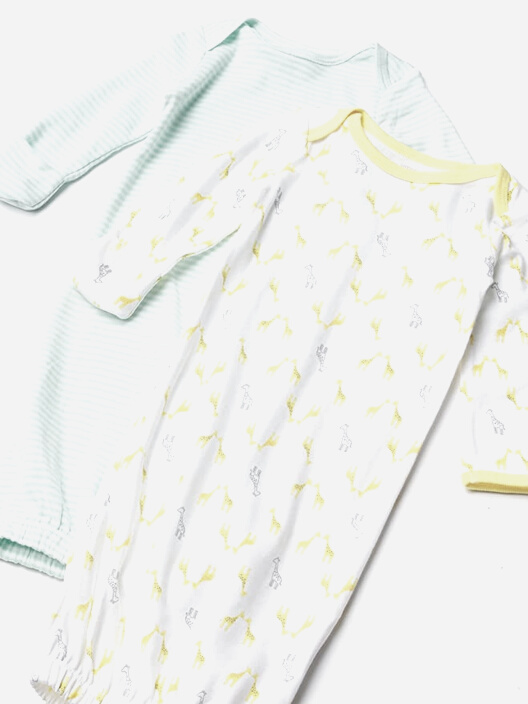





*We share affiliate links throughout this article which we make a commission on when a purchase is made. We are so grateful for your love and support and hope to provide you with more helpful information.*
Feeding your Newborn
Introduction
Congratulations! You've brought your bundle of joy into the world, and it's time to start feeding them. From the first day to months later, there are many things you'll need to know about feeding your newborn. This article will cover everything from setting up a feeding schedule and making sure that you're giving them enough milk (or formula), all the way through how to deal with nighttime feedings.

First few days and weeks
Your newborn's feeding schedule will depend on his or her needs. Your doctor will likely recommend feeding your baby every 2-3 hours for the first few days, then gradually extending the time between feedings. For example, a newborn may be fed every 2 hours at first, then 3 hours later and so on until he or she is eating only every 4 hours (or even longer). Eventually your child will be ready to sleep through the night without needing food again until morning.
This guide assumes you're breastfeeding, however if you are using formula it takes baby longer to digest so the time between feedings will be extended!
Try and encourage your baby to eat lots in the daytime. This can be difficult because they are so sleepy at this early stage of life.
When you are feeding your newborn, you should try to feed on demand. Newborns need food every 2-3 hours. They will tell you when they want food by crying or showing other signs of hunger.
It's normal for your newborn to be hungry a lot. Trust their appetite and your instincts!
It's normal for your newborn to be hungry a lot. Trust their appetite and your instincts!
When you’re breastfeeding, it’s normal to worry that you aren’t feeding enough or too much—but the truth is, when you see how much milk your baby takes in at each feeding, you can feel confident that they are getting all they need. If they are gaining weight normally (or close to it), then they are likely eating what they need. It also helps to know that as long as there is no sign of jaundice or dehydration and if their diapers are wetting regularly this means that they do not have excessive fluid loss through urination or pooping (this usually happens only with diarrhea).
If you’re formula feeding, then it’s important to remember that babies will only take in what they need to be satisfied. Most bottles have markings on the side indicating how many ounces each of those marks represents (these will vary depending on brand). You can use these as guidelines to help you know how much your baby is eating.
0 to 4 Weeks

0 to 4 weeks is a very important time for your newborn. It is also a time of rapid growth and development. At this stage, your baby will begin to learn how to feed and sleep, as well as communicate with you.
Newborns need frequent feedings (usually every two to three hours). The number of feedings per day varies from baby to baby, but most will eat at least eight times a day for about 10 minutes each time.
Some of our feeding tools for 0-4 months olds were:

Newborn feeding amounts for Formula and Breastmilk
You should know how much milk your newborn needs. Here are some helpful tips:
- For formula-fed babies, give them enough to make sure they're satisfied but not so much that they throw up.
- If you're breastfeeding, feed on demand.
- Watch for hunger cues and try to feed them before they start crying.
- Newborns will go from consuming very small amounts of milk to a much larger amount by the end of 4 months. Almost 5-8 oz. at the 4 month mark, which will stay the same until they start eating solids.
- watch for constipation with formula fed babies as it it more common.
- Breastfed babies will eat 8-10 times in a 24 hour period (when on demand it may be more frequent) and when those feedings happen is up to baby!
For those who are formula feeding, here are the amounts of milk to give at each feeding: The average newborn will drink about 2.5-3 ounces (75-90 milliliters) every 2-3 hours. This amount increases as your baby grows and is able to take more at each feeding. At about 2 months, your baby may be taking 4-5 ounces (120-150 milliliters) at each feeding and the feedings may be every 3-4 hours
When your baby is 1-6 months old, they'll take in an average of 2.5-3 ounces (75-90 milliliters) of breast milk or formula about six to eight times every 24 hours. Newborns should eat as much as they want at this age, but a general rule of thumb for breastfed babies is they will eat about every two to three hours.
Feeding Newborn at night
If you are looking for more flexibility, night feeding will be important for baby and you can slowly work towards less night feedings as they get older. Here are a few points to consider:
- Newborns usually sleep several hours without eating during the day, but they should feed every 2-3 hours overnight unless they are sleeping longer (which means they are full so let that cutie pie sleep).
- If your baby is crying and fussy in the middle of the night they are most likely hunger or looking for comfort.
- if it's been less than 2-3 hours since baby went to sleep you could try comforting them with w soother or a cuddle to discourage night feeds, however if baby continues to be upset they might not be ready to give up that night time feeding.
- Try getting to baby before they are crying loudly. Babies that are in a sleepy state drink more and might be able to go back to sleep easier.
- If you are bottle feeding use a warmer to save you time when you have a fussy baby that really just needs to eat in order to continue sleeping.
Remember-all babies are different and what works for one may not work for another. If you feel like your baby needs more than 3-4 hours between feedings at night, then don't be afraid to give them a little extra time. It's best to follow baby's lead and let them set the schedule they need.



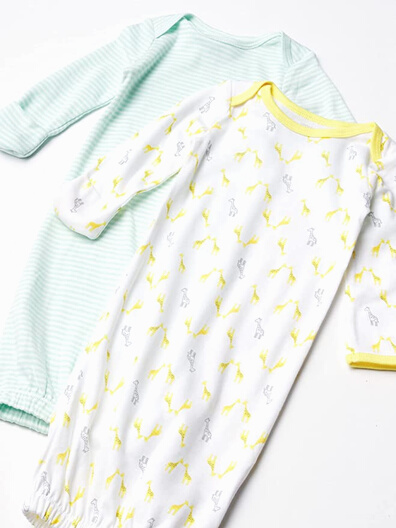
Conclusion
Now that you know what to feed your newborn, it's time to get started! You can use these tips as a guide for feeding your baby, or even just for some extra information about when and how much milk is needed. Keep in mind that every baby is different and will have different needs depending on their health status. If you're concerned about anything related to feeding or caring for your baby, talk with an expert like your healthcare provider.
Helpful night time items for baby:

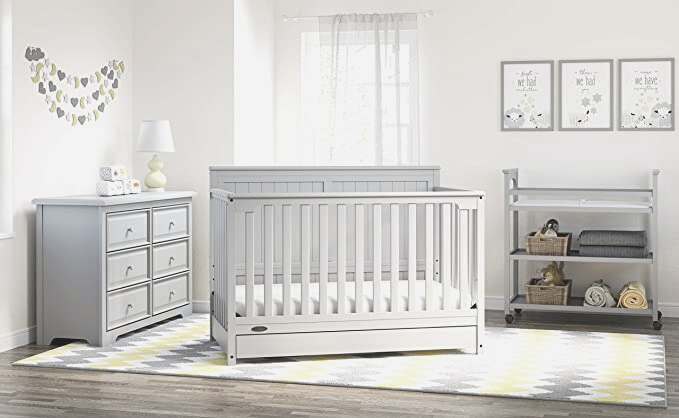


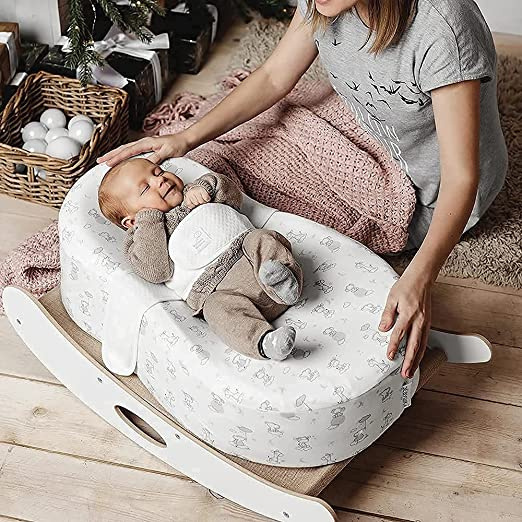

Newborn Essentials
When you have a newborn, it’s important to have the right baby essentials. Here are some essential items that will make your life easier:
Sleeping essentials
Sleeping essentials can be a big part of your baby's sleeping routine. In fact, some babies may even sleep through the night if you have all of these items handy.
Fitted sheets and water proof mattress covers:
- should be used to cover the mattress and protect against stains and spills.
- should be washed regularly, at least once a week if not more often.
- shouldn't be too tight on the mattress because it can cause damage over time.
- should be machine washable, so you don't have to hand wash them every time you wash them (which may lead to mildew)



Humidifier or diffuser
Humidifiers and diffusers are a perfect fit for any new parent! This little device can help baby fight off common colds and congestion, as well as colic and teething. In addition to helping with dry skin and eczema, humidifiers also help create a more comfortable sleep environment for your newborn.
Diffusers are effective at relieving symptoms caused by dry air like:
- Dry skin
- Eczema
- Congestion in the nose and lungs
Rocking chair or glider
A rocking chair or glider is a must-have for any new parent. It’s perfect for feeding, comforting and rocking your baby. Plus, it’s also a great place to read, relax and bond with your baby.
Rockers are also useful for reading and relaxing after a long day at work (or if you need some time to yourself). They’re also part of the calming nighttime routine as they help lull babies into sleep as they rock back and forth with the gentle movement of these seats. And if you have little ones who are still learning how to use the potty, these chairs make an excellent perch when they need some alone time!
Finally, we recommend choosing one that comes with removable cushions since this makes them much easier to clean!
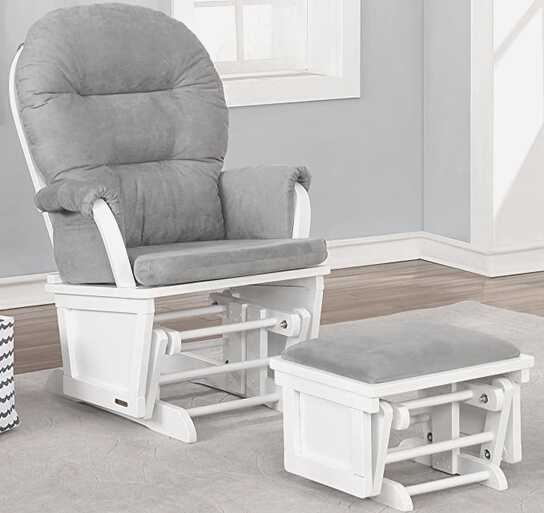

A bassinet is a small bed for the baby. It's meant to be placed near your bed, so you can easily reach your child throughout the night without having to get up and walk across the room. It's also portable and easy to move around the house if you're cleaning or want to take a break from holding your new bundle of joy.
- This is a great option for those first few months at home with your newborn. As soon as they outgrow their bassinet, though, it will likely become more of an inconvenience than anything else—you'll have to move it around every time you need space in order for them (and yourself) to sleep comfortably; plus there's always going to be that risk of rolling over on top of them while half-asleep! In addition, many people find themselves feeling claustrophobic in these tiny spaces after spending several nights with them crammed next door during those early days when there was no other place left but right beside Mommy/Daddy’s side—it might feel familiar but feels less comfortable than having some distance between yourself and little ones who are still learning how much space they need during sleep time!
- Crib size: The length of a crib should be at least 2 inches longer than the baby's length, while its width should be no more than 2 inches wider than the mattress. It's important to know that there are many different types of cribs, including traditional drop-side models and those that convert into toddler beds or full-size beds when your child gets older.
- Crib mattress: Crib mattresses are generally composed of either foam or coiled springs (or both), but you may want to do some research before making a purchase so you can find one that fits with your budget and style preferences.
- Crib sheets: When it comes time for bedtime, make sure you have plenty of soft cotton sheets on hand; these will keep your little one comfortable during nap time!
- Crib mattress pad or protector: A good quality waterproof pad or protector will protect against spills and unexpected accidents in case they happen while mommy is busy doing something else around the house (like writing articles). You'll be glad she did when she doesn't have to wash her expensive duvet cover every week!

Home safety essentials
As a parent, you're probably worried about your baby's safety. In an effort to help you keep your little one protected and secure, it's important to use the right products in your home.
Here are some essentials that can help ensure peace of mind:
Baby gates are a must-have item for any parent. Baby gates are used to keep your baby safe from falling down stairs, getting into the kitchen, or getting into the bathroom. There are many options available that will meet your needs and safety requirements for your little one, so let’s take a look at some of the most popular picks on the market today!
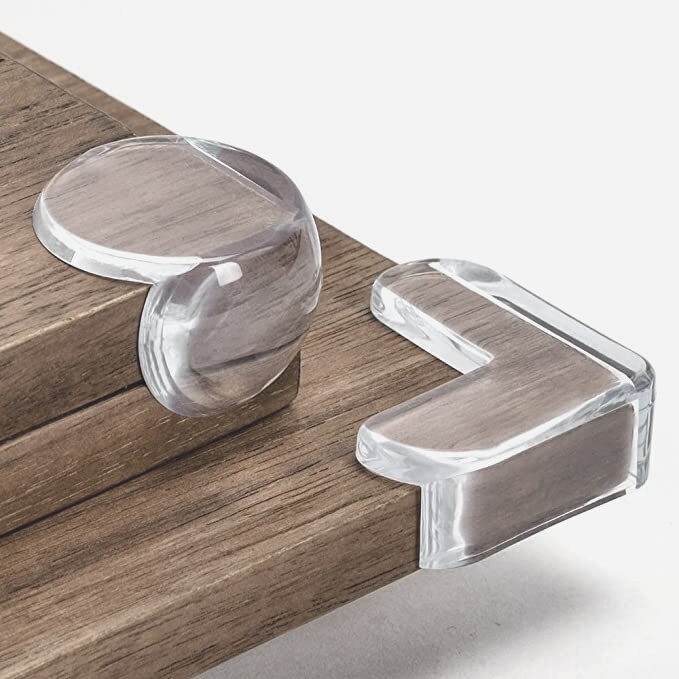
Toilet locks are a must-have for any parent with small children. The lock will keep your child safe when you're not around, and it's easy to use. It's a good way to prevent your child from falling in the toilet and getting hurt.
Toilet locks are also ideal for keeping your toddler safe while they're potty training, as they allow them access only to their own bathroom and don't allow them to wander into other parts of your home where there may be hazards like stairs or stairs with railings just outside the bathroom door (meaning there’s no barrier between them and possibly falling down).
Corner guards are one of the most useful things you can buy for your baby. They protect your child from bumping into sharp corners or running into them while they are learning to walk and run. A lot of accidents happen when a child is running around an open space, but corner guards can help prevent these accidents by making sure that each corner has something soft covering it so that your baby will not get hurt if he or she bumps into it.
Furniture anchors are a great way to keep your baby safe in your home. They can be set up in minutes and give you peace of mind.
Furniture anchors are also a great solution for any furniture that was previously used with your child, but is no longer needed in the same space. For example, if you have moved from a crib to a toddler bed, the furniture anchor can easily be placed on top of the toddler bed so that it continues serving its purpose as a safety device (keeping little ones from rolling off) while allowing them some independence when they no longer need help getting in or out of bed!
Diapering essentials
Diaper needs:
- Diapers - Get all the diapers you think you'll need. If you're breastfeeding, you might not need as many of them at first, but don't get less than 50 or 100. You can always buy more later if needed. These days most people use disposable diapers because they are easier to use and clean up after (no wet or soiled clothes!). However, there are some parents who prefer cloth diapers because they feel that it's better for the environment and their baby's health; check out these tips on how to choose between cloth vs disposable diaper methods before stocking up on your favorite kind!
- Wipes - Wipes come in several sizes (for example: travel size wipes). You'll want plenty of these so that changing time isn't interrupted by having to run out and find a package of wipes while trying not to wake up your little one! It's also nice if your diaper bag has room for extra supplies like ointments/lotions/creams etc., as well as some toys or other distractions :)

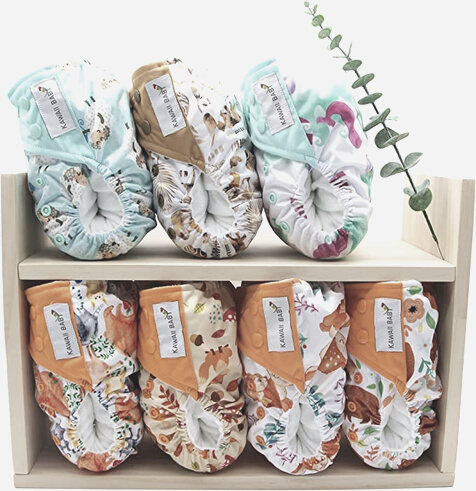


Diapers: disposable or cloth
When your baby is brand new, you'll want to start with disposable diapers. These are very easy to use and you can just throw them away when they're used up. But if you want a more environmentally friendly option, cloth diapers are an option for anyone who has the time and energy for washing laundry!
For older babies (and toddlers), it's more about preference than anything else. Disposable diapers tend to be bulkier but still hold enough liquid that most mothers find them sufficient for their child's needs; cloth diapers look more like real underwear and offer better absorption rates since they're made out of absorbent material (i.e., old-fashioned cotton). Cloth diapers also have the added advantage of being able to double as emergency potty training pants when necessary!
Diaper covers
Diaper covers are a waterproof barrier that protects your baby from wetness. They can be used over diapers to keep them from leaking into clothing or bedding. Diaper covers are usually made of plastic.
You don't have to buy diaper covers, but they're recommended for babies who wear cloth diapers because plastic tends to be more waterproof than fabric. If you do purchase one, make sure it has wide elastic at the waistband so it will fit easily over any type of diaper and keep moisture away from your baby's skin.
Diaper pins or Snappis are used to fasten diapers. They are reusable, but diaper pins are not. Diaper pins can pose a serious risk to babies if they happen to poke the skin of an infant in their sleep or while they’re being changed. Snappis also make changing diapers easier because they allow you to securely fasten your baby’s diaper with one movement instead of several, which makes it harder for them and you when it comes time to change diapers (especially if your baby is restless).

"Why do you need a changing pad?"
A changing pad is a great way to keep your child safe during diaper changes. It keeps him or her off of the cold floor and provides an easy-to-clean surface in case of an accident.
How to choose the best changing pad for your family
When choosing a changing pad, there are several factors to consider: how often will you be using it, what type of flooring do you have at home, and how much storage space do you have? Keep reading for more information about each of these considerations.
"Wipes are a necessity!"
They're convenient, easy to use, and useful for all sorts of things. Here's how you can use baby wipes:
- To clean your baby's face and hands after meals
- To clean up messes (i.e., when they've spilled milk or juice on the floor)
- For diaper changes (obviously!)
- When they have a runny nose or sneeze in their hand while eating or drinking
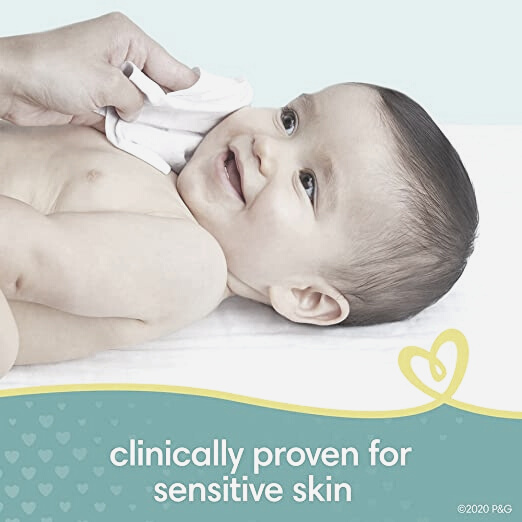

Feeding essentials
You'll also want to be prepared to breastfeed or bottle feed. If you're breastfeeding, you'll need a breast pump, nursing bras or tanks, and nipple cream. If you're planning on bottle feeding your baby with formula, it can be hard to find organic formulas that are free of hormones and toxins. You can ask your doctor about how much soy is safe for your baby as well as look into other options like goat's milk or homemade formulas using coconut milk powder (which is great because it's full of healthy fats).
If you plan on making your own formula at home, make sure that all the ingredients are very clean and pure so they don't contain any pathogens that may cause illness in your child later on down the road.
There are a variety of uses for a breast pump. For example, you can use it to express milk when you're away from your baby. If you get mastitis—a painful inflammation of the breast tissue that's common among breastfeeding women—you may also want to use a breast pump as part of treatment.
Nursing bras provide all-day comfort and support for women who are nursing. They're also a must-have, because they help you avoid embarrassing leaks by providing an extra layer of protection between your bra and your breasts. Nursing pads are another essential item that will protect your clothes from the inevitable leaky incidents in the first few weeks after delivery.
There are many brands of nursing bras and pads on the market—some more affordable than others—but it's important to get one that fits right and feels comfortable. Your body has just gone through a huge change, so don't skimp on something like this! Nourish yourself with some new clothes while you're at it; why not treat yourself to a cute new outfit?

The first step in preparing a bottle for your baby is to warm it. This can be done in a variety of ways, including:
- Using the microwave or stovetop (this method will take some trial and error)
- Using an electric bottle warmer (a great option if you don't have a microwave or stove at home)
- Using steam from boiled water to warm the milk inside of your baby's bottle (use tongs when handling hot water to avoid burns).


You should wash bottles and pacifiers in the dishwasher, but you do not need to sterilize them.
Pacifiers can harbor bacteria, so they should be cleaned after each use and replaced at least every three months.
Bottles should also be washed after each use, but it's important to note that a bottle brush is not as effective as hand-washing because it doesn't reach places where bacteria can hide. You can also buy special brushes designed for cleaning bottles with narrow openings or multiple parts (like sippy cups).
When choosing a formula storage container, make sure that you consider the following:
- It must be easy to clean.
- It must be easy to pour from.
- It should keep your baby's food warm if needed (if you don't have access to hot water and a microwave).
- It should also be easy for you to store in the refrigerator as well as travel with.
A nursing pillow is a great way to help you breast feed. Breast feeding helps your baby grow, and it helps you feel like part of your own family. It can also be awkward and uncomfortable at first, but with the right tools, breast feeding can be easy! Just try not to get too frustrated or angry when the baby decides they want breakfast at 6:30 p.m., after you've already put him down for the night. You'll find yourself wondering why you ever thought any other way was acceptable anyway—and remember: no one's judging!


This was one of our most well-received gifts, and we use it all the time. It's a great way to keep bottles warm (or cool) on the go, and it has a few pockets for other things like blankets or burp cloths. If you're not into carrying around an entire cooler bag with you everywhere, this is a great option!
A burping cloth is a piece of fabric that's used to protect baby's clothing from spit-up and drool, helping you keep them clean while they eat. They're also great for wiping up spills and other messy accidents.
There are several different types of burp cloths you can get:
- Flat (rectangular) - A flat burp cloth is exactly what it sounds like: a rectangular piece of fabric with no frills. These are usually made out of absorbent fabrics like organic cotton or bamboo rayon, which makes them soft and naturally comfortable against baby's skin. You can find these at most major retailers, including Amazon and Target (where I personally shop).
- Sleeved - Some babies have sensitive skin that may be irritated by the roughness of some fabrics, so if yours has such issues then try using an armless bib instead! These come in various sizes but generally look similar to regular ones except they don't have any arms attached; instead they just drape over your child's shoulders like a scarf would when worn during wintertime months."
Takeaway
You've probably noticed that there are a lot of options out there, and that's because every baby is different. There's no one-size-fits-all solution for what your baby needs.
Some things are more important than others: your baby needs them to survive! Some things may be less important, but they can make life easier on you as a parent—and if they're expensive or difficult to find, then they're even more valuable.
There's no need to feel overwhelmed by all the information out there; we'll help you sort through it all so that you can make an informed decision about what's best for your family.





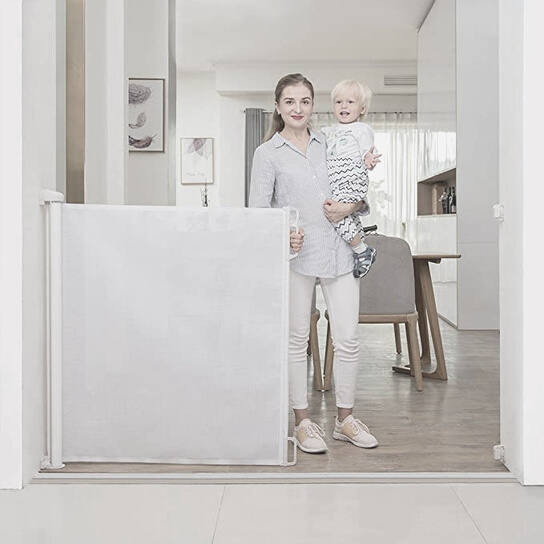




Newborn Toys
"As a new parent, you're probably overwhelmed by the sheer number of baby products on the market. It can be tempting to buy every gadget and gizmo that promises to make your child smarter, happier, or somehow more special. However, when it comes down to it, there are really only a few kinds of toys you'll need for your newborn nd we are about to show you them!"
Toys are important for development
Toys are important for development. They can help with gross motor skills, fine motor skills, and even language development.
Here are some examples of how toys can help your baby learn:
- Toys that rattle or make noise will encourage your baby to reach out and touch them as they discover what makes the noise. This is how they learn about cause and effect!
- Toys that light up or have different textures will allow your baby to explore their surroundings more easily by feeling everything with their hands, which helps develop those gross motor skills we talked about earlier.
- High contrast black and white toys are great while their eye sight is developing. It will grab their attention and help teach them focus.
Good elements to look for in newborn toys
- Make sure the toy is safe. Check for sharp edges and small parts that can break off, as well as chemical exposure or toxic paint.
- Make sure the toy is appropriate for your child's age, interest level and ability level. If you are buying a plush toy, make sure it doesn't contain any small parts that could be swallowed or choke hazards. If you are buying a teething ring, make sure it isn't too big for your baby's mouth (you don't want him to bite down on plastic). And if he likes music boxes or play phones: check out their volume levels first! You don't want your little one listening to anything over 85 decibels (dB) at all times because prolonged exposure may cause hearing loss later in life!
- Look into how long your baby will be interested in playing with this toy before moving onto another one -- some babies get bored easily while others want something new every day so keep an eye out!

Nesting Flower

Things to avoid with newborn toys
- Avoid toys with small parts. These are choking hazards and can cause injuries to your baby’s face, mouth, or eyes.
- Avoid toys with strings. Strings can get wrapped around your baby’s neck and cause strangulation.
- Avoid toys with sharp edges that could hurt your baby if they bite down on them or put them in their mouths.
- Avoid loud toys because loud noises can damage a newborn's hearing ability.
- Avoid very big or heavy objects if you have a very young child; this may overwhelm them or even cause injury if they try to pick it up themselves!
- Make sure that any stuffed animals aren't too large—young babies should not be allowed near anything that could suffocate them while they're sleeping!
List of favorites to consider
"Here are 10 toys we think are great for newborns"
- Toy rattles
- Toy mirrors (for making funny faces)
- Toy mobiles (because they're pretty, and babies like to look at things above them)
- Books with lots of colors and textures (to help develop early senses)

For your baby's health and well-being, it's important to give them the right kinds of toys.
As a parent, you'll want your baby's toys to be safe and educational. The right toys can help your baby learn about the world around them in ways that are fun and exciting.
- Toys that teach cause and effect are great for developing motor skills, hand-eye coordination, and problem-solving abilities. Babies should be able to pick up on the basic idea of cause and effect with objects that make noise when they're touched or shaken; these toys may also have lights or other tactile features like soft fabric or rattles that encourage exploration of different sensory experiences for babies.
- Toys that encourage movement can help strengthen muscles as well as build balance in your child's body as he grows older. There are many options available when it comes to choosing a toy that encourages movement; some examples include jolly jumpers, belly time pattern blankets, etcetera!




Conclusion
So there you have it! We hope this list of our favorite toys for newborns gave you some ideas to start with. There are so many great options out there, and we know how difficult it can be to choose between them. But don’t worry! The most important thing is that your baby has fun with their toys and enjoys interacting with them. As long as they're safe, age-appropriate, and engaging enough for babies under 12 months old (or even younger), then go ahead and grab what works best for you—no need to stress too much over which brands or types are right for your little one's stage at this point in time.
Best newborn clothes
"Finding the right clothes for your newborn can be tricky."
After all, you want your baby to look stylish, but you also want them to be comfortable and practical. So how do you achieve this? Start by looking at how easy it is to fasten and unfasten any garments or accessories (you don't want something that takes two hours every time). Then consider the fabric - there are many options on offer such as cotton, wool or fleece.
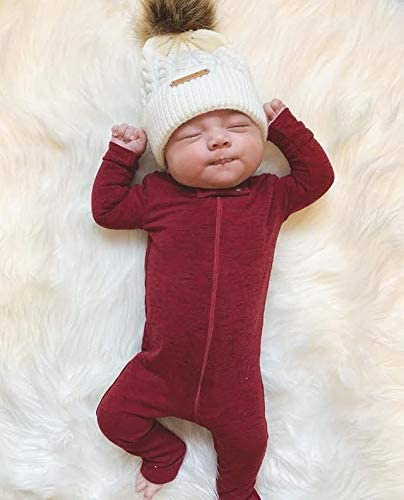
Practicality
There are many options for baby's clothing, but some are more practical than others. For example, a bodysuit or sleepsuit can mean less time dressing and undressing your little one. With zippers or snaps (or both), it will take less time to get baby dressed and out of the house in the morning.
One of the most important things to look for when buying clothes is that they are easy-care materials. Cotton blends are great because they're durable while still being soft on your baby's delicate skin. You'll also want to consider whether or not you want something with a bib or hat—both come in handy when you're out in public!
Your baby will need plenty of bodysuits and sleepsuits, and avoid any that are difficult to fasten or unfasten.
Your baby will need plenty of bodysuits and sleepsuits, and avoid any that are difficult to fasten or unfasten. These types of clothes are the most practical for the first few months—bodysuits are easy to change and wash, while sleepsuits mean you don't have to worry about matching your baby's outfit all day long.
If you can find ones without scratchy labels or buttons, even better!
Zippers vs snaps. Zippers always win!
When it comes to baby clothes, you really can't go wrong with zippers. They're less likely to get stuck, more durable and easier to wash than the snaps. Zippers have a little tab that you can use without even touching the zipper itself, making them much faster than snaps (which require two hands). Snaps are also more difficult for babies who are just learning how to do things on their own—they'll need help getting those snaps undone!

Babies grow incredibly fast in the first few months, so buy the larger size instead of opting for the smaller sizes.
Babies grow quite fast in their first few months of life, so you'll want to buy some larger sizes than you think you might need. The best way to make sure you have a good fit is by using size charts (such as those provided by the manufacturer) and measuring your baby's height, chest circumference and waist circumference. You should also check out these tips from Healthline on how to measure your child accurately:
- First lay down a towel or cloth for padding on the floor where you will be finding measurements for your child. This will keep them from getting hurt when lying down on any hard surfaces like tile or wood floors.* Then put a soft blanket under them so they are comfortable while being measured.* Pick up your child by holding their armpits with one hand while supporting their back with the other until they are standing upright on two feet with their legs straightened out in front of them (not bent at all in half). This position helps ensure that we get an accurate measurement of both length and width throughout each part of their body as well as around places like feet/ankles when bending over at 90 degrees would reduce accuracy due to rounding off numbers if not done correctly.
Buy a few more pieces than you think you'll need, as babies can sometimes be quite messy.
One of the most important things you can do to ensure that your baby has a comfortable and safe experience is to dress them in clothes that are easy to wear and wash. Clothes that require multiple steps or pieces (such as undershirts, pants, and jumpers) are not only more difficult to get on and off but also take longer to dry.
Another key factor in choosing newborn clothing is whether it will be worn outside or inside. Many parents choose items that can be worn indoors only, like onesies and footed pajamas. In general, you want clothes that are lightweight enough so they don't trap heat or sweat but thick enough so they're not see-through or revealing.
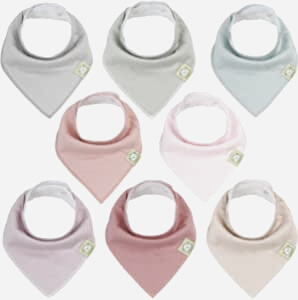
Fabrics such as cotton are breathable and soft for baby, but look out for easy-care materials too - you'll want to spend your time cuddling your newborn rather than ironing!
- Fabrics such as cotton are breathable and soft for baby, but look out for easy-care materials too - you'll want to spend your time cuddling your newborn rather than ironing!
- Avoid scratchy fabrics like wool or polyester. They may be popular with some parents, but they're not so comfortable for delicate skin.
- Color-block designs are an easy way to add some color and pattern to a baby's wardrobe without being too loud or overwhelming (it's also great if you're looking to mix up the monochromatic look of many gender-neutral outfits).
A cardigan or jacket is always handy to pull on on chilly days too. Cardigans are easy to put on and take off, and can be worn over other clothes if you don’t have time for the full outfit change. A cardigan will also keep your baby warm when not wearing a onesie or sleepsuit, whether that's during the day or at night (especially in winter).
"Bibs and hats are essential too, as your newborn will often dribble or spit up milk. Plus, it's important to keep their delicate heads warm when outdoors. They can also help protect their facial skin from the sun."
Bibs and hats are essential too, as your newborn will often dribble or spit up milk. Plus, it's important to keep their delicate heads warm when outdoors. They can also help protect their facial skin from the sun.
Bibs can save you doing lots of clothing changes and they're great at catching dribbles before they hit your baby's clothes! Heat is lost most quickly out of our heads. If baby is cold use a hat

Comfort, ease of care and practicality are important features of the best baby clothes
You probably don't want to spend all of your time washing, drying and folding tiny baby clothes, and neither do you want your little one spending all day in uncomfortable clothes and while they're sleeping. Comfort, ease of care and practicality are important features of the best baby clothes.
The best baby clothes are comfortable for babies because they can move freely without constricting their movement or chafing them anywhere. The material should also be soft enough to withstand multiple washings before it starts to wear thin (which is why we recommend buying organic cotton instead of synthetic fabrics). As far as easy care goes, choose a safe product that won't stain easily so you don't have to worry about ruining your child's clothing when doing laundry on top of everything else!
Conclusion
If you're planning on having your baby soon, it's time to start shopping for all those adorable outfits! There are so many options out there now that choosing the right ones can seem overwhelming. Luckily we've linked some of our favorites throughout this article so you can get started on gather the best clothing for your little one.



Newborn Carriers
"When you're expecting a baby, one of the most important purchases you'll make is a baby carrier. There are several types to choose from, so it's important to understand the differences between them and how they work best for your child."
There are several things to consider when buying a baby carrier, so do your research and try on a few models to find the one that's most comfortable for you and your baby.
When you're shopping for a carrier, there are several things to consider. You'll want one that fits your needs and is safe for your baby. Here are some things to keep in mind:
- Weight of the carrier. A heavy carrier can feel uncomfortable and make it hard to move around while wearing it, which may be inconvenient if you have other kids or pets who need attention too. On the other hand, if too light of a carrier feels flimsy or doesn't fit right on your body type (hap size), then it could cause backaches or discomfort as well.
- Size of the carrier. Some people like large carriers because they offer lots of storage space for diapers and snacks; however, this also means more bulkiness when trying on at home before purchase! If weight isn't an issue but space saving is important then perhaps something smaller would work better instead?
- Materials used in construction
When you're shopping for a carrier, keep in mind that babies grow quickly, and you may want to buy new carriers as your child grows.
When you're shopping for a carrier, keep in mind that babies grow quickly, and you may want to buy new carriers as your child grows. You can buy a second carrier to use while the first one is being washed.
Three types of carriers work well for newborns -- soft-structured carriers, ring slings and wrap slings.
There are three types of carriers that work well for newborns: soft-structured carriers, ring slings and wrap slings. Soft-structured carriers are easy to put on and take off, which is important for a newborn whose neck muscles aren't strong enough to support his head at this stage. Ring slings have the advantage of being lightweight, easy to use and adjustable. However, they're not great if you want to be hands-free while using one because they require both hands (one hand holds the baby; the other ties or clips the sling around your waist). Wrap slings are made from fabric that can easily wrap around your body with minimal tying required. They're highly customizable based on different body shapes and sizes -- but remember that it takes longer than other types of carriers to get comfortable with wrapping yourself in them!

Quick clip carriers are easy to put on and take off. They can be used from birth up until around 35 pounds.
If you’re looking for a carrier that is easy to put on and take off, quick clip carriers are a good choice. They can be used from birth up until around 35 pounds, which makes them ideal for parents who need to quickly get things done or want to carry their baby hands-free.
Stretchy wrap carriers are lightweight, easy to use and a good choice for infants. They're also highly customizable to fit comfortably on different body shapes.
A stretchy wrap carrier is a fabric wrap that you can use to carry your baby. It's lightweight, easy to use, and highly customizable to fit any body shape and size. You can use it with babies of all ages (up to around 35 lbs) as long as they're at least 3 months old.
To use a stretchy wrap carrier correctly, first put the fabric over your shoulders so it sits on the back of your neck. Then put one end under each arm and cross them in front of your chest so they're behind you again. Finally tie up the ends behind you in whatever way makes you feel most comfortable!
Woven wrap carriers are highly versatile, allowing you to carry your baby in different positions. It can take some practice to learn how to use them properly and safely, but many parents find them worth the effort.
Woven wraps are among the most versatile carriers available. They can be used in several different positions, and because of their design, you can adjust them for your baby's comfort. Woven wraps also tend to be more durable than other kinds of carriers and will last through multiple children.
However, woven wraps are not as quick or easy to use as other styles—they require practice before you're able to get a secure hold on your baby. And because they don't come with buckles or snaps that make it easier for parents who aren't familiar with them (or who have no experience with daily life as a new parent), they may not be right for everyone.
That said, many parents find that using a woven wrap is worth the effort: some moms swear by them as the best way to carry even newborns safely while others say they're useful even years later when chasing toddlers around town!
Carriers are a great way to keep your baby close and help you get things done around the house. They're not just for newborns, nor are they just for mothers. Carriers can be great for families on a budget, too!
Great for a family that loves being outdoors and is often hiking. This gives great support for your back and allows more airflow between you and baby.
It is important to buy the right type of carrier for your baby and make sure it is used safely and correctly
- Baby should be able to see out of the carrier.
- Baby should be able to breathe easily.
- Baby should be able to move their arms and legs freely.
- Baby should be able to be carried for a long time without becoming uncomfortable.
- Baby should be able to be carried safely.
Conclusion
We hope this article has given you a better idea of the different kinds of carriers available and what type might work best for you. As always, it’s important to do your research on safety features as well as how each model is constructed before purchasing one. If you have any questions about choosing the perfect baby carrier for your needs or want advice from other parents who use these products, please leave us a comment below!
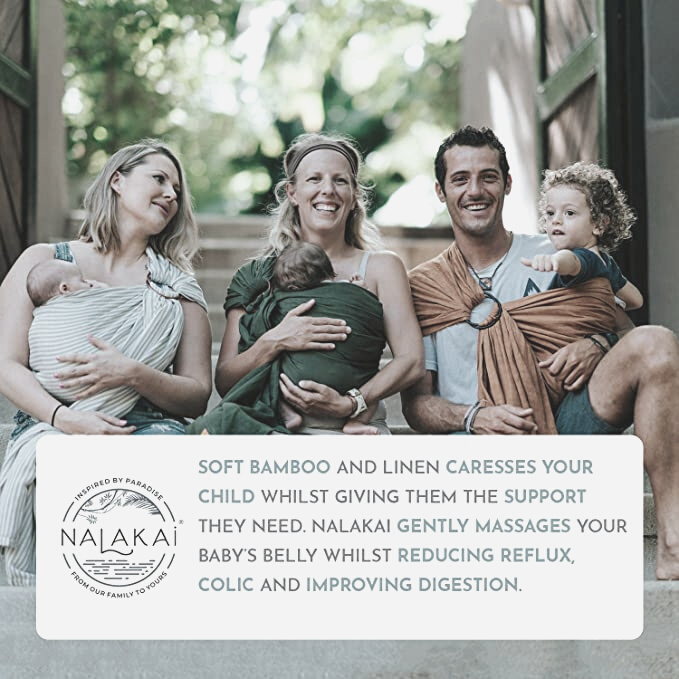
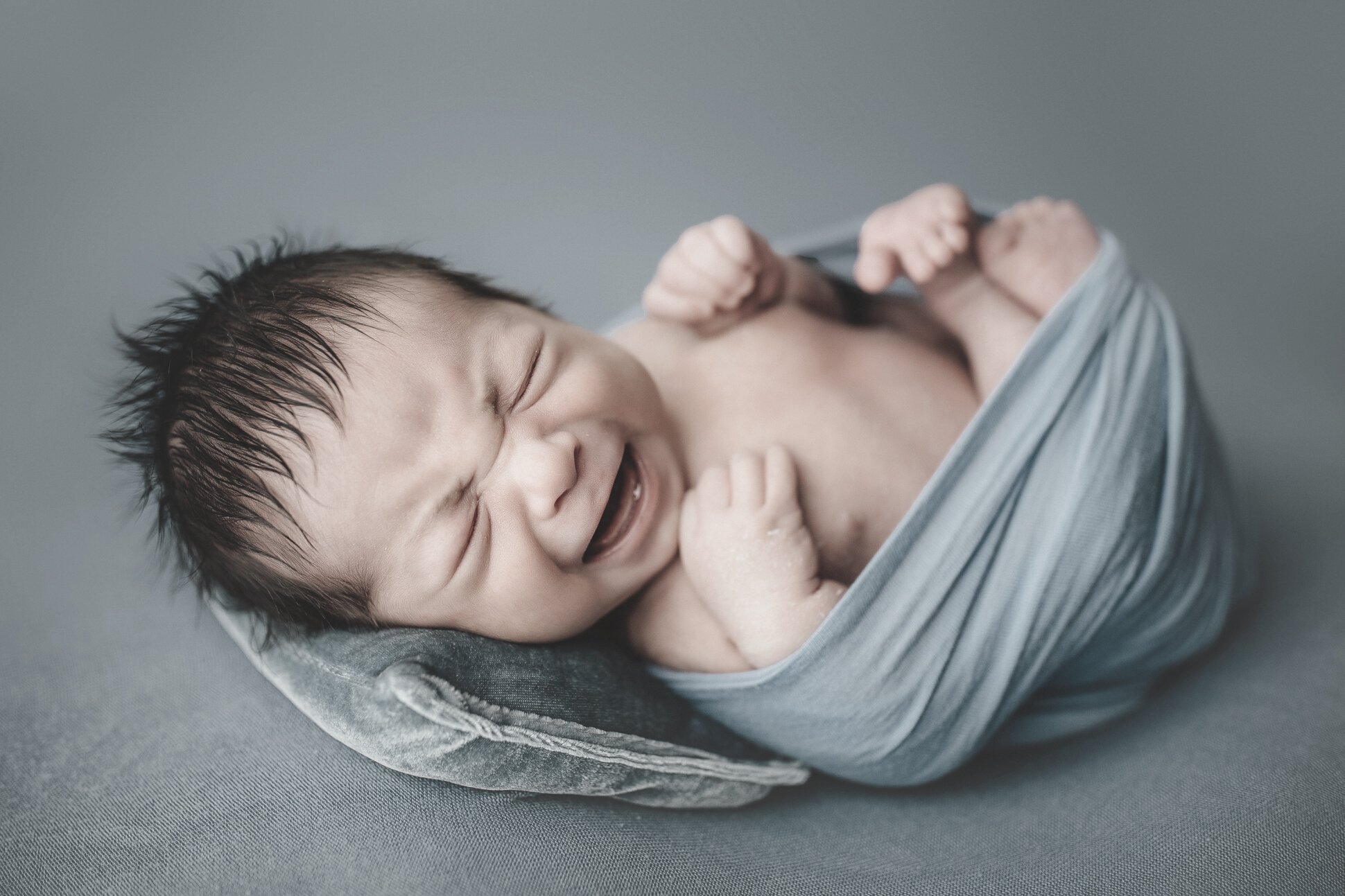
Under Construction!
So sorry! We are doing our best to gather tons of great info for you!
Follow our Social Media to know when it becomes available.
@bodzasy